There’s so much you can do with colored pencils — why limit yourself to simple coloring? Instead, practice and employ these colored pencil drawing techniques. With a little trial and error, you’ll master them in no time. Soon enough, you’ll be adding texture, light and a whole lot of beauty to your artwork.
Indenting paper
Indenting is a technique of making very thin, white lines within dark values. The process would be impossible to do with erasers or masking fluid. Animal whiskers, flower’s filaments and anthers, fur, leaf veins, scratches and other fine details are good examples of elements you might want to indent.
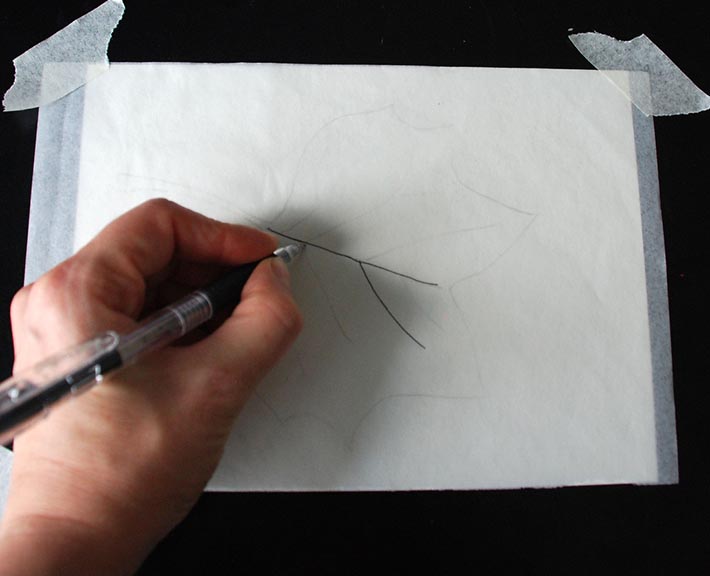
How to indent a drawing
Place a piece of transparent paper (tracing paper or wax paper) over your drawing where you want to indent the drawing. Take a ballpoint pen or a 2H graphite pencil and draw over cat’s whiskers, flower’s filaments, grass blades, house siding or any other areas that you want to indent and texturize. Then, lift the sheet of wax paper and begin shading over the indented area in your drawing. If you place enough color, you’ll soon reveal the strokes you previously applied.
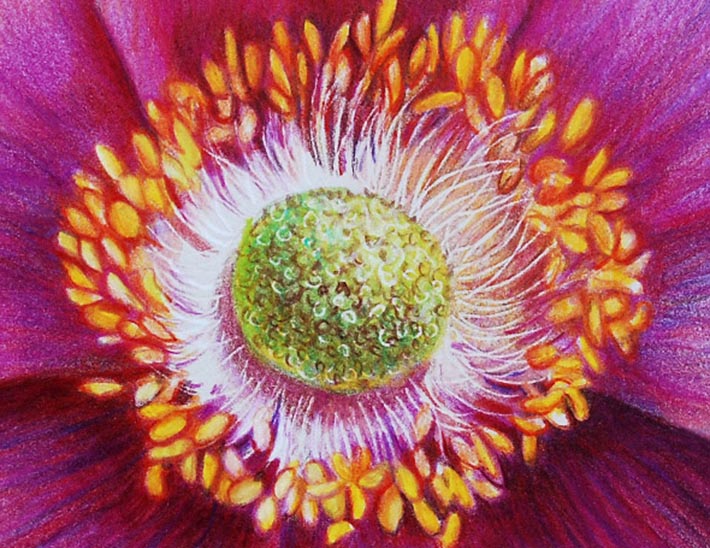
Drawing highlights
There are several methods to create the lightest areas in your colored pencil drawings, and they often depend on the types of paper you draw on.
 Drawing highlights on white paper
Drawing highlights on white paper
If you draw on white paper, simply reserve space for the highlights, leaving the paper’s original white tone. Don’t color over the white paper with your white colored pencil — the highlights would lose their brilliance. Instead, outline the lightest areas with a very light colored pencil like cream or light peach (whatever works best with your drawing) so you don’t shade over the white areas by accident. If you outline the lights with a graphite pencil instead, this line intensifies shaded over it with light colors, flattening out the space.
Drawing highlights on toned paper
If you draw on toned paper, you can use the white colored pencil to shade the highlights. However, because white is a cool color and often times the highlights are warm and have their own color, shade with a light colored pencil first (cream, light peach, cloud blue, etc.) and then finish up shading with white. Apply a very heavy pencil pressure to achieve the necessary brightness.
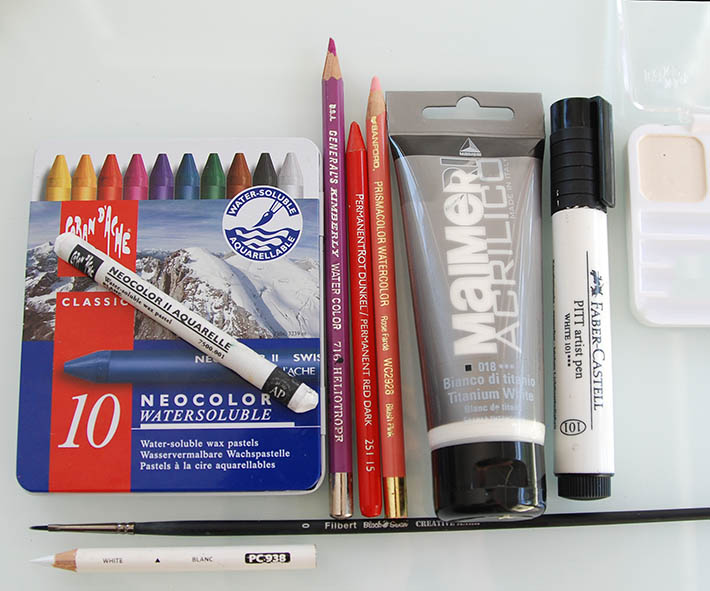
Highlighting tools
If the highlights are super tiny or need a punch, try using touch of white crayon, pastel, gouache or even acrylic paint with a 00 brush. Water dilutes all three mediums, and a quick brush clean-up is a must for acrylic paint because it dries instantly. A white Faber-Castell Pitt artist pen can also work great for some drawings.
A few artists use an art X-Acto knife to put just a few tiny highlights. Beware: This technique requires practice and is usually done at the very end.
Learn Colored Pencil Essentials

Improve all of your colored pencil drawings! Learn easy, empowering techniques for color mixing, application and more in this expert-taught online video class.
Rubbings
In the image below, you see some examples of the textures done as rubbings over sea shells, a cheese grater, a textured box, filigree earrings, a frame, and even a sushi roller. To achieve this look, place your drawing paper over a textured surface like lace, leaves or anything else with bumps and ridges. Rub your colored pencil over the paper and textured surface. Note that rubbings done over thicker drawing paper will be less effective than a thinner paper.
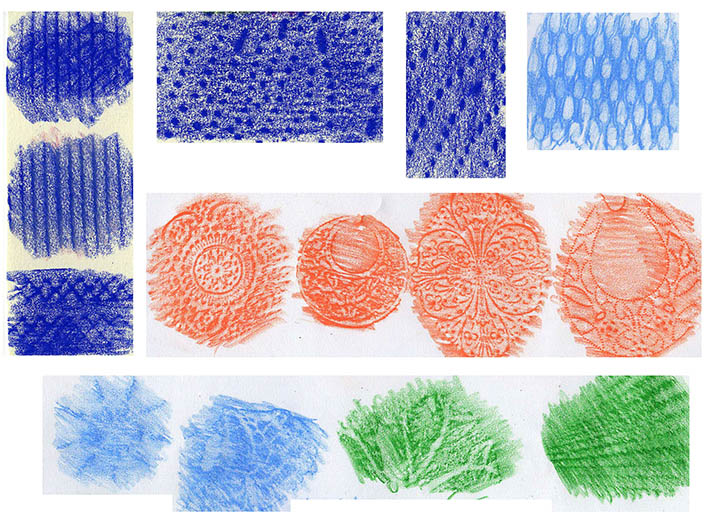
Combining mediums
Many artists use watercolor pencils to under-paint large areas such as backgrounds. Use a brush to apply a small amount of water over the watercolor pencils to dissolve and blend the pigment. Once the paper is dry, colored pencils can be layered over it.
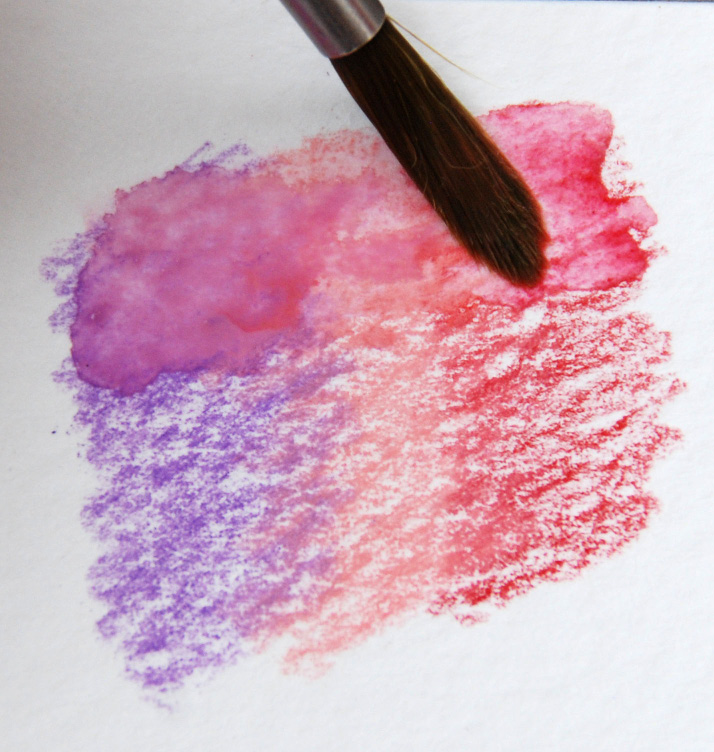
Some artists combine the Faber-Castell Pitt artist pens and colored pencils to under-paint large areas or to create details. Pitt pens come in a wide variety of colors and nibs: extra super-fine, super-fine, fine, medium, etc.
Learn Colored Pencil Essentials

Improve all of your colored pencil drawings! Learn easy, empowering techniques for color mixing, application and more in this expert-taught online video class.

Share tips, start a discussion or ask one of our experts or other students a question.
No Responses to “Colored Pencil Drawing Techniques You Can Master In No Time”